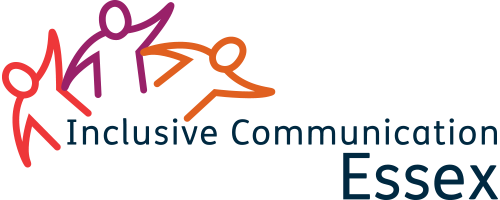At present the ICE process is only available to people supporting adults with a learning disability.
Essex has a project to develop the process for people who work with children and young people who have learning disabilities.
If you work in a residential or resource centre which provides services to adults with learning disabilities, you need to ask the manager to contact the local Speech & Language Therapy Manager to discuss the relevance of the inclusive communication process to your place of work.
Following this, if the site and the Speech and Language therapy service can take on the work involved, the ICE process starts. If the Speech and Language therapy service cannot start work immediately, your site will go on a waiting list.
The ICE process has the following parts:-
- Registration of the site with the Inclusive Communication Resource Manager,
- Training of staff to appreciate how, why, where and when we communicate so that communication is effective.
- Training of staff to use signs, symbols, photographs and objects to communicate with service users. This includes making and using visual timetables, communication profiles and 'Communication Passports'.
- Training of staff to use Intensive Interaction with people who are difficult to reach.
- Support from a Speech and Language therapist to enable a site to implement what carers have learnt on their training. This part differentiates ICE from other approaches. Every site is allocated to a Speech and Language Therapist, who facilitates the production and use of suitable materials and approaches according to the specific needs of the service users in the site. This cooperative team work between Speech & Language therapists and Site staff make things happen. Speech & Language Therapists work with trained Coordinators and Communication Champions at ICE sites to ensure that ideas are seen through and that change really does happen to improve the quality of interaction for people with learning disabilities.

